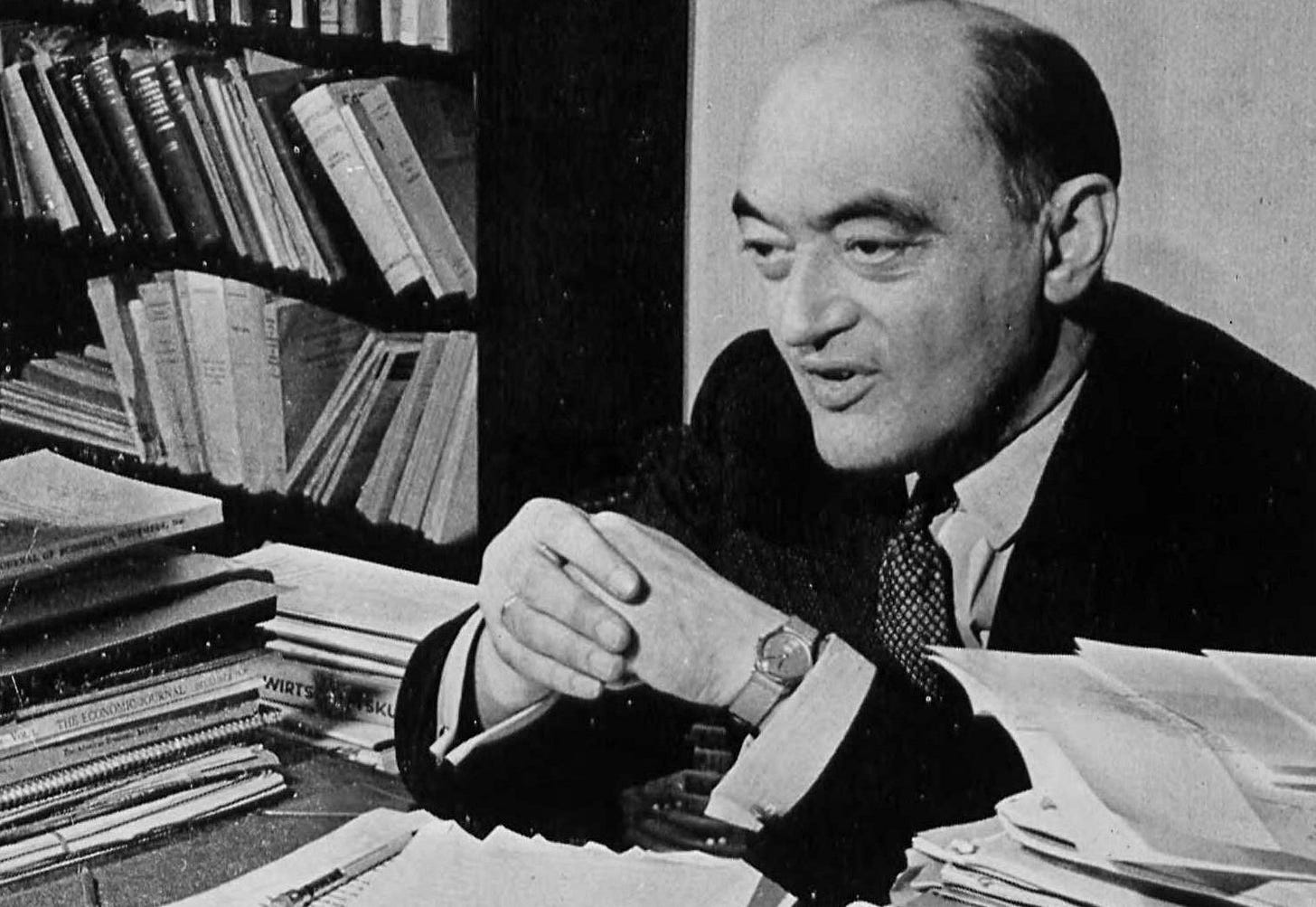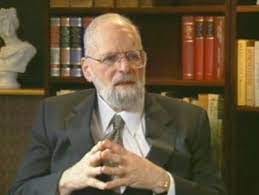The evolution and influence of thinking in management Part 1: Economic thought
An unpublished series of management ideas
Introduction to the series
This series of articles are a review of the evolution of management research, thinking, philosophy and action that forms the current basis of knowledge we have today. This review is far from exhaustive and includes only those thinkers and practitioners that have had either a profound influence on the practice of management, lay some basis to the formation of the body of entrepreneurship ‘theory”, or in the opinion of the author have been underestimated in their importance or have a potentially great future importance. One will also see that many created fads, which appear to follow a cycle, starting with an academic discovery that is developed into a technique or principle and published as a journal article or academic book. These ideas are picked up and then widely promoted as a means to improve the organisation through increasing productivity, reducing costs or promoting excellence, etc. After being promoted as a universal cure for all corporate problems, the results fail to deliver the promises and the fad disappears with those realising that it is difficult to convert ideas into new practices. These fads are included because they have greatly influenced management thinking.
The body of research papers on entrepreneurship have been left out completely in this time-paradigm chronology, as it is too early to determine their real influence on the body of knowledge on entrepreneurship. Currently there are more than 105 journals relevant to entrepreneurship being published around the world, generating more than 1,000 papers per annum (probably a gross underestimation), which is not including the number of new books being published each year (That was in 2006, now many things more).
This first part concerns theoretical economic thought in regards to entrepreneurship.
Part 1: Economic Thought
Early economic thought was very limited on the concept of entrepreneurship, as classical economic assumptions deemed everybody had free access to information about the marketplace for making decisions[i]. Theories recognised collective (aggregate) behaviour, thus making it impossible to distinguish individual behaviour in economic theory. Although neo-classical micro-economic theory recognised the importance of entrepreneurship on market dynamics, it had little to say on the subject. Economic theory was dominated by Adam Smith’s ‘invisible hand’ in the marketplace, which could not explain barriers to entry, innovation and the competitive process in the marketplace.
The term entrepreneur was most probably introduced by Richard Cantillon in the 1700’s, who recognised the importance of the self employed and uncertainty in the marketplace. This was accorded prominence by another economist Say and adopted by James Stuart Mill in England, where in English translation the word entrepreneur took on the meaning as someone who was a merchant, adventurer, employer and undertaker of a new project. This gave the term entrepreneur a functional meaning in economics, although it was only descriptive at the time.
During the 19th Century, Vilfredo Pareto a political economist at the University of Lausanne in France recognised that in a market 80% of the activity was usually controlled by 20% of the players. Pareto applied this principal to income distribution and found that in most countries 20% of the population derived 80% of the income. This became known as the 80/20 principal (or 80/20 rule).
Pareto’s thinking had a profound influence on economic thinking at the time and also various aspects of management in the 70’s and 80’s. In his study of income distribution in World economies at the time, Pareto found that new entrants into a market producing the same product or substitutes would grow the market until a point of saturation, where new firms would not produce new income from the economy, but take income away from existing producers. Pareto’s principal indicated that innovation was necessary by producers to increase the size of aggregate income in any economy and thus produce new wealth.
This is a basic principle behind many books on innovation today.
Pareto’s principal also found its way into marketing, sales, financial and operations management in the second half of last century. A small group of sales people would usually produce the majority of sales, a small group of customers would produce the majority of revenue (this is an area where firms try to diversify away from to reduce risk and has a cost bearing on customer service), 20% of the fishermen would catch 80% of the fish, and so on[ii]. The 80/20 rule was utilised in inventory control mechanisms in the use of materials requirement planning (MRP) systems popular in the United States in the late 1970’s and 80’s[iii], and also had some basis in the development of Japanese just in time and kanban systems, primarily utilised by car makers in Japan and adopted by US car makers, made popular with numerous books on the subject in the 1980’s[iv].
It was not until the early 20th Century that the role and environment of the entrepreneur was more closely examined. Knight in the early 1920’s saw the understanding of entrepreneurs required an interdisciplinary perspective, utilising psychology and sociology, as well as economics to provide a deeper understanding, something which the business schools of today are adopting. Knight believed that the correctness of an entrepreneur’s conjecture about an opportunity could not be accurate as conjecture could only be proved by future events, thus facing uncertainty and risk[v]. Knight further espoused that opportunity identification depended on individual intellect and foresight, which required certain personal characteristics on the part of the entrepreneur. Knight also stipulated that prior experience in the industry where an opportunity was sort would lead to better knowledge of potential outcomes in the marketplace. Many of Knight’s insights have formed the basis of entrepreneurial research in the personality, attribute and cognitive psychology areas.
Schumpeter in the 1930’s expanded upon Knight’s hypothesis and explained innovation as being based on new information coming out of changes in technology, political forces, regulation, macro-economic factors and social trends. An entrepreneur perceives new information from changing events and configures resources to exploit a perceived opportunity. Thus innovation is based on new knowledge and requires people to make decisions on little hard data, thus involving uncertainty. People perceive opportunities through creativity (a theme taken up by many writers in the last two decades). Opportunities can be exploited by changing the ‘means-end’ framework, through five sources of opportunities; 1. new products or services, 2. new geographical markets, 3. new raw materials, 4. new methods of production, and 5. new ways of organising[vi]. Schumpeter saw market evolution through a process of ‘creative destruction’, where firms develop and launch new products that make existing products outdated and disappear from the marketplace. Schumpeter’s work is particularly important in seeing the internet, electronics and biotechnology industries, where new developments quickly change the ‘means-end’ structure of the market, and relate to the importance of university start-ups as a future source of change in the marketplace[vii]. The rapid change of companies listed in the Fortune 500 list over the last thirty years would tend to support Schumpeter’s concept of ‘creative destruction’. Schumpeter also postulated that the entrepreneurial nature is usually short lived where after start-up, a firm will focus on building up it’s position in the market and then strategically defend it’s interests. This postulation has great impact on the lifecycle of the firm and been the subject of many writer’s focus on strategies to maintain the entrepreneurial aspects of the firm in maturity. Schumpeter’s work has also influenced so many thinkers in the area of strategy over the last century, probably Porter’s ‘value-chain’ and Drucker’s sources of innovation concepts.
Joseph Schumpeter
Hayek saw that all firms were in a state of disequilibrium in a market that also was in disequilibrium. Through the pricing mechanism, entrepreneurs would make decisions which would change the market[viii]. This requires a decentralised economy where people would discover opportunities based on idiosyncratic information gathering throughout their life and the freedom to act[ix]. Thus, under these conditions, entrepreneurship would continue to drive the market toward efficiency, inferring entrepreneurship is important aspect of economy efficiency and growth, a matter of current socio-economic policy in most economies, where entrepreneurship is a major employer and contributor to GDP. Andrews took the state of firm disequilibrium further into a strategic perspective that classical economics had not done, looking at a firm’s strategic behaviour in the marketplace. Success or failure is crucial to the firm in it’s outcomes and influence on the economy and in general firms operate in a market maintaining fairly uniform prices, collecting a share of loyalty from consumers. It is the imperfect competitive factors such as quality of service, range of different products, advertising, etc, that maintains a firm’s health in a narrowly specified industrial market[x]. Andrew’s theory, expanded by Penrose developed the idea that every firm is unique in the market with its own strategies, set of skills and personal qualities which influence the firm’s growth[xi].
Friedrich Hayek
Kirzner in 1973 took a different perspective on innovation from the Schumpeter argument stating that individuals only use the information they possess to form beliefs about the different configurations of resources to exploit opportunities[xii]. Firms make errors in decisions resulting in failure or less than optimum performance in the marketplace, which create opportunities for others to exploit. This offers another type of opportunity than the Schumpeter type that co-exist in the marketplace at the same time[xiii], but require less resources and risk to capitalise upon. Kirzner views the marketplace as in equilibrium where firms travel along it and are by nature less innovative than Schumpeter’s model, accepting on the whole, the established way of doing things and not creating major disruptions to an industry[xiv]. Kirzner’s arguments lend weight to the postulation that most firms innovate in an incremental manner rather than transform an industry they are in.
Israel Kirzner
E. F. Schumacher’s book was one of the most profound statements about the environment, economics, humanism, poverty and creativity, ever written. The title, Small is Beautiful is a little bit misleading as it was a critique about the abuse of power of large businesses around the world in their disregard for the environment, ethics, employees and the community. Schumacher suggested that large corporations should break down their organisations so that employees within the smaller units could become empowered and creative. He pointed to Alfred Sloan’s breakdown of General Motors into smaller units as an example. Schumacher also focused on the third world problems of poverty and argued that current paradigm of economic aid was not effective and that ‘knowledge was the best form of aid’. Schumacher said that “to equalize rural-urban affluence requires a great effort of imagination; …. Systems of ideas and values that suit relatively affluent and educated city people are unlikely to suit poor, semi-illiterate people. Poor people cannot simply acquire an outlook and habits of sophisticated city people. If the poor cannot adapt to the methods, then the methods must be adapted to the people”[xv], thus offering a whole new paradigm in aid and development. Schumacher said that there are other important goals rather than just improving a person’s income such as personal and community empowerment, independence, creativity and self-esteem.
Although the book was a best seller, few people have actually read it and even fewer have implemented Schumacher’s theories. However many governments reviewed the problems of small businesses and developed schemes to assist in financing and marketing products produced by micro-enterprises. In Japan, the One Village – One Product (OVOP) program was started and later Thailand commenced it’s One Tambon One Product (OTOP) Program, both with good success. Schumacher’s ideas bear relevance to corporate creativity today and could grow in importance in the approach taken to the development of rural micro-enterprises in the future in developing countries[xvi].
Part two Production thought
Unpublished manuscript October 2006
Click on subscribe so articles can be directly emailed to your inbox:
Notes and References
[i] Casson, M. (2003) The Entrepreneur: An Economic Theory (2nd. Edition), Cheltenham, UK., Edward Elgar.
[ii] Townsend, R., (1970) Up the Organisation, New York, Michael Joseph.
[iii] Wright, O. W., (1981) MRP II: Unlocking America’s Productivity Potential, Blodgett Landing, NH., CBI.
[iv] Schonberger, R. J., (1982) Japanese Manufacturing Techniques: Nine Hidden Lessons in Simplicity, New York, Free Press.
[v] Knight, F., (1921) Risk, Uncertainty and Profit, New York, Augustus Kelly.
[vi] Schumpeter, J., (1934) The Theory of Economic Development: An Inquiry into Profits, Capital Credit, Interest, and the Business Cycle, Cambridge, MA., Harvard University Press.
[vii] Shane, S., (2003) A General Theory of Entrepreneurship, Cheltenham, UK, Edward Elgar.
[viii] Hayek, F.A., (1937) ‘Economics and Knowledge’, in Economica (N.S.) 4, reprinted in Hayek, F.A., Individualism and Economic Order, London, Routledge and Kegan Paul, 1959, pp. 77-91.
[ix] Hayek, F.A., (1960) The Constitution of Liberty, Chicago, University of Chicago Press.
[x] Andrews, P.W.S., (1949) Manufacturing Business, London, Macmillan.
[xi] Penrose, E.T., (1959) The Theory of the Growth of the Firm, Oxford, Basil Blackwell.
[xii] Kirzner, I., (1973), Competition and Entrepreneurship, Chicago, IL., University of Chicago Press.
[xiii] Shane, S. and Venkataraman, S., (2000), ‘The Promise of Entrepreneurship as a Field of Research’, Academy of Management Review, 26 (1), pp. 13-17.
[xiv] Aldrich, H., (1999), Organisations Evolving, London, Sage.
[xv] Schumacher, E. F., (1973), Small is Beautiful, London, Blond & Briggs Ltd., , P. 161.
[xvi] Hunter, M. (2006), Efforts to Empower The Community Through Essential Oil Production in Sabah, Paper presented to the Seminar on Community Involvement in Sustainable Bio-Resource and Biotechnology Utilisation, 5-6th September, 2006, The Magellan Sutera Hotel, Sutera Harbour, Kota Kinabalu, Sabah.








